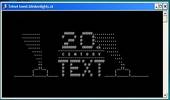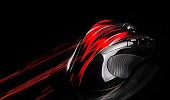Suppose you have a music folder that contains all songs by your favorite singer. Would it not be great if instead of the plain white background, you could add the singer's image as the background of this folder?
It is relatively easy to add background images to folders using a simple desktop.ini trick just as easily as you can change your Desktop's background.
Desktop.ini is a system file that is used to customize the appearance and behavior of folders in Windows. We can use this ability of desktop.ini files to add backgrounds to folders just by adding a few lines of code.
Steps for adding backgrounds to Folders
You can hide this desktop.ini file if you feel that it is something that should not be visible in your folder.
Note: If you have installed AveFolderBG, you can directly add background images to folders by right clicking in the work area of any folder, selecting Properties and going to the Folder Background tab.
Tip: I am using this trick to have a personal picture as the background of the root folder of my flash drive. So, whenever I connect it to my Windows PC, the picture is displayed as the background. You can also do this but you should have the image in the drive itself. As you cannot assign a static location to the iconarea_image parameter (as the drive could be G:/ on one computer while F:/ on the other), you need to add the image's dynamic location. To do this, add "/{location of the image in flash drive}" as the value of iconarea_image. For example, if your image is located in the Pics folder in the flash drive, you need to have this value as:-
It is important to note that the background to your flash drive will only be displayed on computers running Windows XP (if you have used the code for XP) or those computers running Windows 7 and Windows Vista that have AveFolder installed (with you utilizing the AveFolder specific code.)
Windows 11, Windows 10, Windows 8.1 and Windows 8 are not officially supported by AveFolder.
If this trick does not work for you, do add a comment.
It is relatively easy to add background images to folders using a simple desktop.ini trick just as easily as you can change your Desktop's background.
Desktop.ini is a system file that is used to customize the appearance and behavior of folders in Windows. We can use this ability of desktop.ini files to add backgrounds to folders just by adding a few lines of code.
 |
| This is how the background in folder looks like. |
Steps for adding backgrounds to Folders
- Open Notepad.
- Copy and paste the following code:-
- You need to slightly modify this code on Windows Vista and Windows 7 as the ability to add folder backgrounds has been removed in later versions of Windows after XP. So, if you use these versions of Windows, install AveFolderBG and then, replace [{BE098140-A513-11D0-A3A4-00C04FD706EC}] with [AveFolder] in the above code. To install this app, extract all the files, open the folder according to your installation of Windows (32 bit or 64 bit), right click install.bat and select Run as Administrator. The code for Windows 7 and Windows Vista users will look like:-
- In this code, iconarea_image is the parameter where the location of your image will go (without the quotes). Example: D:\Wallpapers\Image.jpg
- Click on File>Save As>select Save as type to All Files and save the file as desktop.ini.
- Place this file in the folder where you want your personalized background.
- On Windows XP, you need to add system attribute to the folder where you want a background. To do this, open the Command Prompt and execute "attrib +s D:\Music" (without quotes) if "D:\Music" is the location of your folder. If there are spaces in the location of your folder, you need to add double quotes around it. Windows Vista and Windows 7 users need not add system attribute to folders.
- You might need to log off and log back on for the changes to take effect. Sometimes, AveFolder app fails to work in which case, you will need to restart Windows Explorer. I recommend you to create a System Restore point in case you do not like the results.
[{BE098140-A513-11D0-A3A4-00C04FD706EC}]
iconarea_image="location of the image"
[AveFolder]
iconarea_image="location of the image"
You can hide this desktop.ini file if you feel that it is something that should not be visible in your folder.
Note: If you have installed AveFolderBG, you can directly add background images to folders by right clicking in the work area of any folder, selecting Properties and going to the Folder Background tab.
Tip: I am using this trick to have a personal picture as the background of the root folder of my flash drive. So, whenever I connect it to my Windows PC, the picture is displayed as the background. You can also do this but you should have the image in the drive itself. As you cannot assign a static location to the iconarea_image parameter (as the drive could be G:/ on one computer while F:/ on the other), you need to add the image's dynamic location. To do this, add "/{location of the image in flash drive}" as the value of iconarea_image. For example, if your image is located in the Pics folder in the flash drive, you need to have this value as:-
iconarea_image=/Pics/Image.jpg
It is important to note that the background to your flash drive will only be displayed on computers running Windows XP (if you have used the code for XP) or those computers running Windows 7 and Windows Vista that have AveFolder installed (with you utilizing the AveFolder specific code.)
Windows 11, Windows 10, Windows 8.1 and Windows 8 are not officially supported by AveFolder.
If this trick does not work for you, do add a comment.

 About
About




Reader Comments
Give a code to remove malwares.
Only if there was a code that could do this.
This does not work for me.
I have updated the tutorial. You might want to retry it.
I am on Windows 7 Ultimate. This works as a charm. Great work!
Wow love the website but doesn't seem to be working for me.
@Timmy; Which OS are you using? If it is Windows XP, you should add system attribute to the folder. I have updated the tutorial to reflect this.
Works on Windows XP. Awesome!
Now I can add background images to my folders. It's so cool! Thanks for sharing.
It's not working on my windows 7 pc... You mentioned that the 'desktop.ini' should be replaced with AveFolder right? I didn't get it... Help me plzzz
@Stephin: The first line of the code should be [AveFolder]. The file would still be desktop.ini.
@Windows 8 users: Windows 8 does not support this trick.
Akhilesh, you are doing great work bringing such wonderful capabilities of Windows OS to light, your efforts are truly appreciated.
it is not working on windows 8
Thanks for providing the utility. I have downloaded it and installed as per your given instructions. Then I created the desktop.ini file as mentioned in artical but nothing happened. However after some trial here and there when I rightclicked in folder freespace and selected properties. Facility for attaching background image appeared. I could be added the backgroung picture as expected. So thank you very much
Post a Comment
Make your opinion count by posting a comment.